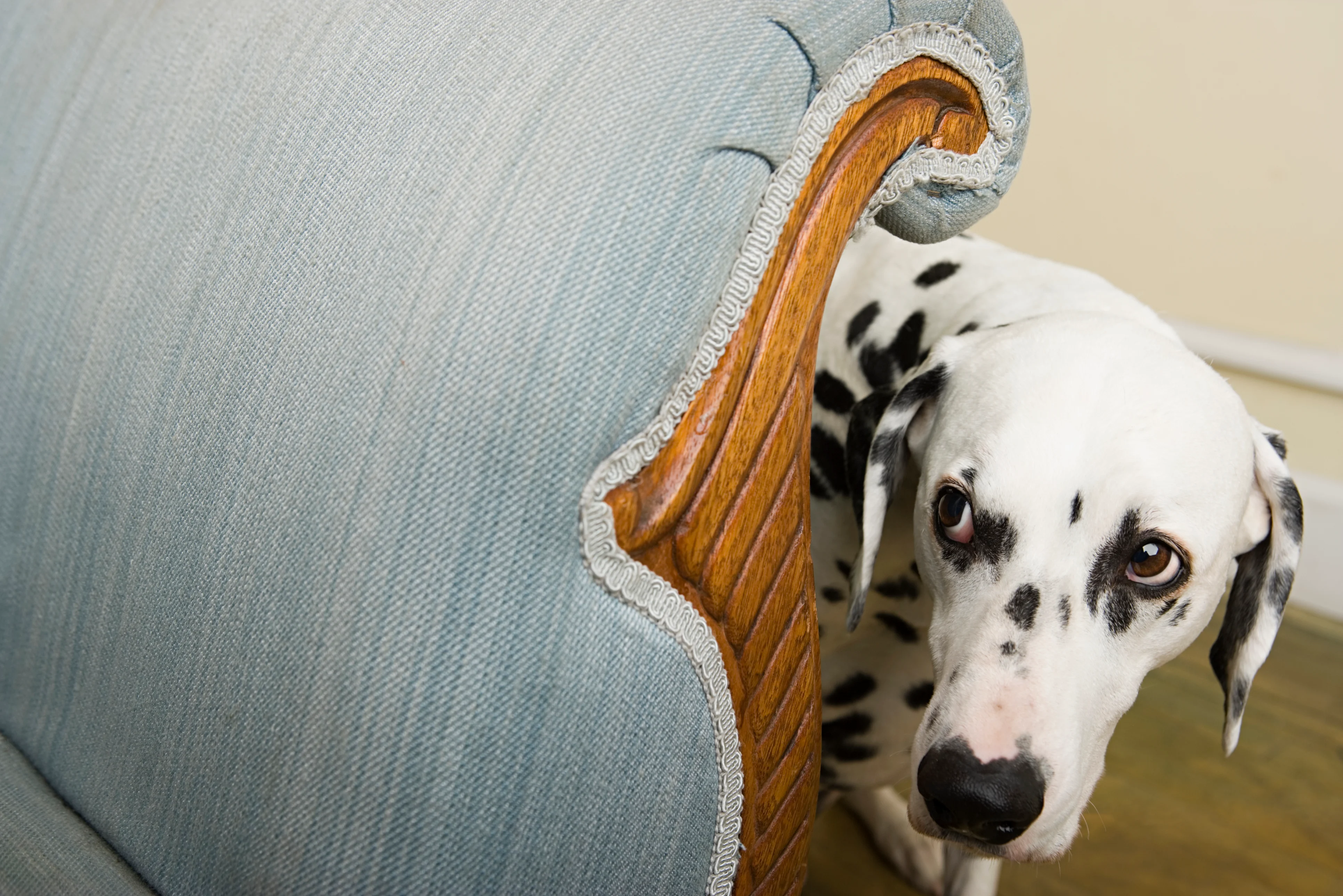
In the Literature
Chin JTY, Poh SXL, Fernandez EJ, Hazel SJ. Turn the volume down: noise hypersensitivity in dogs. J Vet Behav. 2025;79:75-82. doi:10.1016/j.jveb.2025.04.005
The Research …
Noise hypersensitivity is a common canine behavioral problem that can negatively impact the welfare of dogs and the human–animal bond.1-3 Noise hypersensitivity prevalence in dogs is ≈14% to 32%, with the most common triggering noises including thunderstorms, fireworks, and gunshots.3-8 Dogs may be presented with mild (eg, trembling) to severe (eg, attempted escape) signs. Noise reactions can be severe because dogs can hear sounds 4 times farther away and sound frequencies 20 decibels higher compared with humans.9
Numerous factors (eg, age, sex, size, origin, neuter status, anxiety status) can contribute to development and progression of noise hypersensitivity.3,6,10 Most dogs begin to show signs by 12 to 18 months of age. Age has been correlated with increased noise hypersensitivity, with a 3.4% increased likelihood of being fearful toward noises with each additional year of age.3,11
This study investigated the types of noises that evoke a negative reaction in dogs and the associated risk factors. An online survey of dog owners (n = 809) included measurements for responses (scale of 0-100, with 100 indicating the most severe reaction) to sounds in 3 categories: Aversive Sounds (eg, fireworks), Human Sounds (eg, coughing), and Environmental Sounds (eg, vacuuming). Dogs had significantly higher reaction scores to Aversive Sounds and Environmental Sounds as compared with Human Sounds.
Fireworks (59.8%) and thunderstorms (55.7%) were the predominant Aversive Sounds, which is consistent with prior research.3,7,8 Crying babies (15.2 %) and sneezing (15.2%) were the most common Human Sounds. Vacuuming (47.5%) and construction noises (32.6%) were the most common Environmental Sounds. Some owners (14.3%) reported a reaction level of 100 to everyday sounds (eg, vacuuming, coughing), suggesting a negative impact on quality of life.
… The Takeaways
Key pearls to put into practice:
The maximum score for noise hypersensitivity to Aversive Sounds was in senior dogs, with a slightly lower level in geriatric dogs (>12 years), likely due to age-related hearing loss. Musculoskeletal pain should be ruled out in senior dogs presented with new noise hypersensitivity.12
Approximately 14% of owners noted a maximum response (ie, 100), indicating sounds had a negative effect on the dog’s quality of life. Some of the strongest reactions were to yelling/raised voices, sneezing, and crying babies, which can be everyday noises. Noise hypersensitivity is common in dogs and can have a negative affect; all dogs should therefore be screened for noise hypersensitivity, and recommendations for minimizing the impact of noise should be provided to owners.
If medication is indicated, psychopharmaceuticals can be considered, including alprazolam, diazepam, trazodone, clonidine, imepitoin, and a commercial dexmedetomidine oromucosal gel FDA-approved for treatment of noise aversion in dogs.13-19


FIGURE Severe responses to noise hypersensitivity in dogs can include destructive behavior. Images courtesy of Erica Balzano, DVM
You are reading 2-Minute Takeaways, a research summary resource presented by Clinician’s Brief. Clinician’s Brief does not conduct primary research.